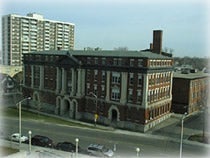While much of the research in the School of Planning is multidisciplinary, professors' research activities generally fall into two major theme areas:
- physical/natural environment
- human and built environment
A particular interest may cross many different themes. For example, airport noise planning requires knowledge of health, design, development, environment, and information systems. Planning inherently combines many different themes into one. Read research stories about our professors, and see recent theses by our students:
Physical natural environment

Areas of study relating to environmental planning include:
- Biology and ecology
- Water and wetlands
- Watersheds
- Forests and parks
Human and built environment

Areas of study for the built and human environments can include:
- Urban design
- Social and demographic dimensions
- Economic development
- Regional planning
- Heritage and preservation
- Health